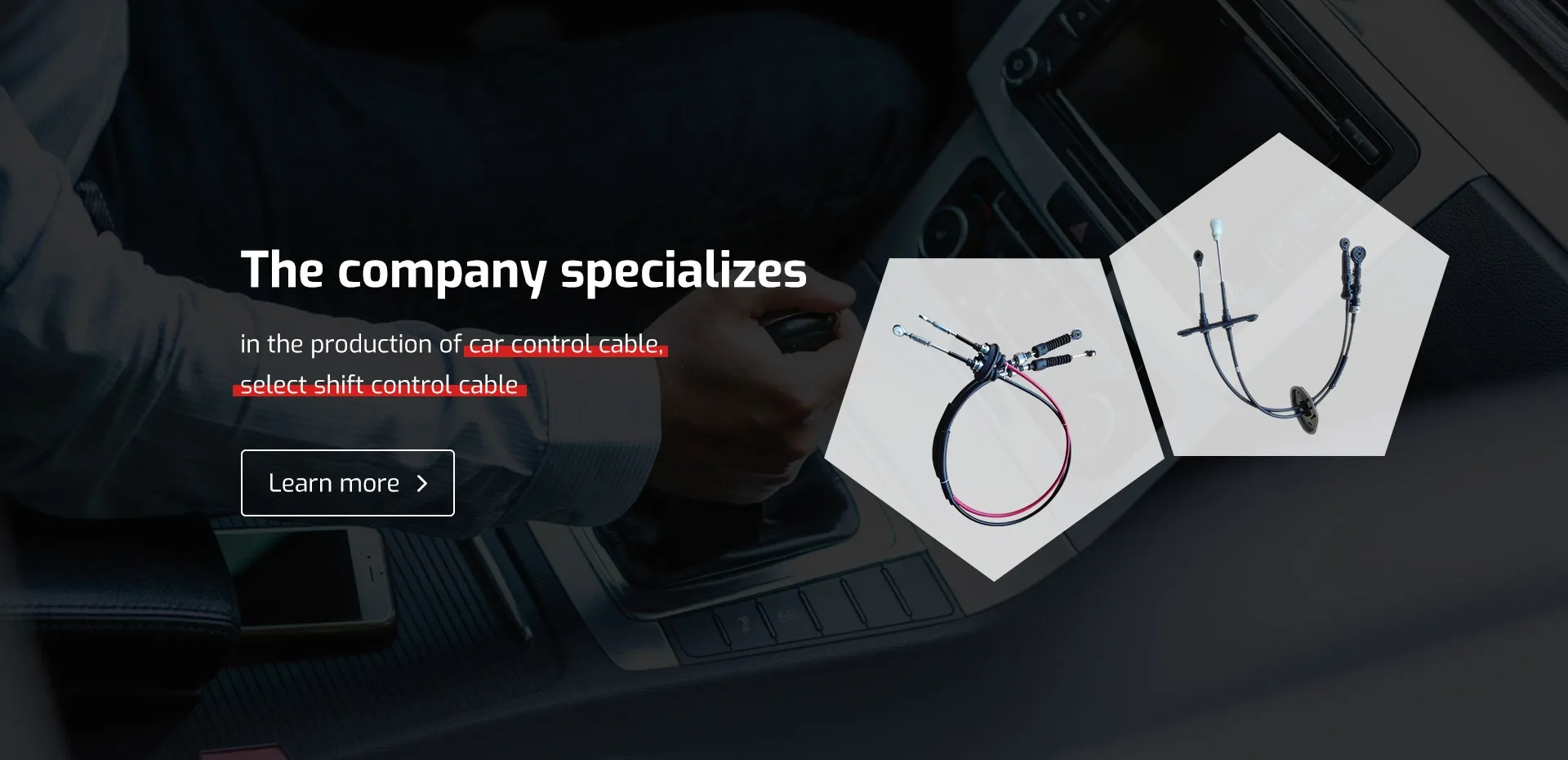push and pull throttle cable
Understanding Push and Pull Throttle Cables Mechanisms, Applications, and Advantages
The throttle cable is an integral component in the operation of various mechanical systems, particularly in vehicles and machinery. Among the different types of throttle cables, push and pull throttle cables are prominent for their specific mechanisms of action and applications. Understanding these cables' functionality, advantages, and roles in various systems can provide valuable insights into their importance in mechanical design and operation.
What Are Push and Pull Throttle Cables?
Push and pull throttle cables are types of control cables that allow the user to regulate the performance of an engine or machinery by controlling the throttle. The push throttle cable typically applies force to open the throttle, while the pull throttle cable is used to close it. In simple terms, a push cable moves in one direction to increase throttle (speed up) and a pull cable moves in the opposite direction to decrease throttle (slow down).
These cables consist of a flexible outer casing that protects a steel wire inside. This wire can be pushed or pulled, depending on the design of the throttle control mechanism. The exact configuration can vary based on the specific requirements of the device they are integrated with, ranging from lawnmowers to automobiles.
Mechanisms of Action
The functioning of push and pull throttle cables is rooted in their mechanical design. The outer casing offers protection, while the internal wire provides the necessary strength and flexibility. When a throttle lever or pedal is actuated, the corresponding cable either pushes or pulls, causing the throttle to open or close.
In many applications, the throttle cable connects the accelerator pedal to the engine's throttle plate. As the driver accelerates, the pedal shifts, either pushing or pulling the throttle cable. This action adjusts the airflow into the engine, directly influencing the vehicle's speed. In contrast, when the driver applies brake pressure, the pull cable may be engaged to reduce throttle, allowing for smoother deceleration.
Applications
push and pull throttle cable

Push and pull throttle cables are widely used across various industries, particularly in automotive, aviation, marine, and outdoor power equipment. In the automotive sector, these cables are commonly found in cars, motorcycles, and heavy machinery. They provide a direct link between the driver's input and the vehicle's engine response, making them crucial for optimal performance and safety.
In aviation, push-pull throttle cables are essential for managing engine power output in various types of aircraft, from light planes to powerful jets. Their reliability and efficiency make them suitable for critical applications where precise control is required.
Moreover, in outdoor machinery such as lawnmowers, leaf blowers, and snow blowers, these cables allow operators to easily control the engine's speed and performance, ensuring effective operation and comfort.
Advantages of Push and Pull Cables
One of the main advantages of push and pull throttle cables is their simplicity and ease of use. The mechanical design makes them straightforward to manufacture, install, and replace. They are generally robust and can endure harsh operating conditions, which is essential in many environments.
Furthermore, they provide reliable feedback to the operator, allowing for better control over the machinery or vehicle. This responsiveness is critical in ensuring safety and efficiency. The push and pull mechanism allows for smooth transitions between speeds, which contributes to a better user experience.
Conclusion
Push and pull throttle cables play an essential role in the operation of various machines and vehicles. Their simple yet effective mechanism, combined with their widespread applications, underscores their importance in mechanical engineering. As technology progresses, these cables are likely to evolve, adapting to new requirements and potentially being integrated into more complex systems. Understanding their function not only highlights their significance in everyday operations but also illustrates the intricate relationship between mechanical components and their practical applications.
-
Upgrade Your Control with Premium Throttle CablesNewsAug.08,2025
-
Stay in Control with Premium Hand Brake CablesNewsAug.08,2025
-
Experience Unmatched Performance with Our Clutch HosesNewsAug.08,2025
-
Ensure Safety and Reliability with Premium Handbrake CablesNewsAug.08,2025
-
Enhance Your Vehicle with High-Performance Clutch LinesNewsAug.08,2025
-
Elevate Your Ride with Premium Gear CablesNewsAug.08,2025
